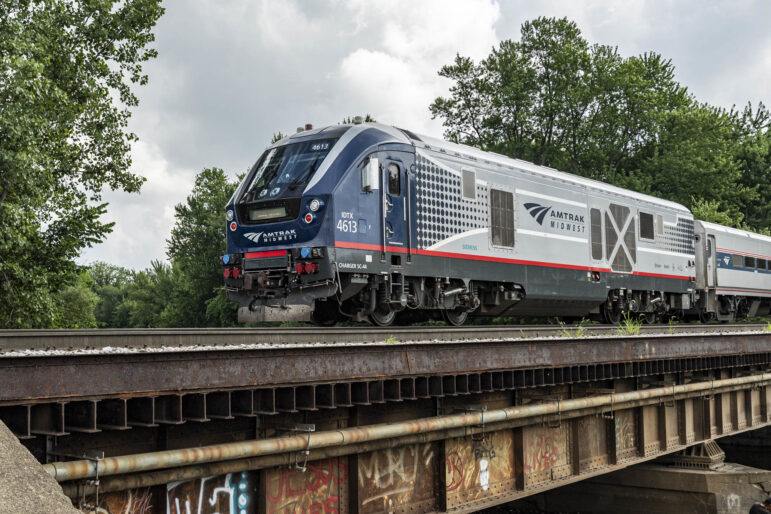
Department of Transportation Office of Rail via Twitter
Michigan has seen a steady increase in railway-related deaths, a new report finds.By KAYTE MARSHALL
Capital News Service
LANSING — A new report based on a review of train-related deaths in West Michigan is calling for more attention to the causes of such fatalities and highlights disparities surrounding the methods used to report such incidents under current laws.
The study, in the American Journal of Forensic Medicine and Pathology, cited an increase in U.S. railroad-related fatalities since 2013, peaking at 901 in 2019.
The Federal Railroad Administration reported that 118 railroad-related deaths occurred in Michigan from 2010 to 2019.
Researchers from Western Michigan University and the Arkansas State Crime Lab reviewed 14 railroad-related fatalities that occurred in West Michigan from 2015 to 2019. They analyzed each case for demographics, investigative components, type of train and death certificates.
Nine incidents involved pedestrians and five involved motor vehicles. The victims’ average age was 32.
The study said 50% of the fatalities were associated with mental illness or recent psychosocial stressors, with suicide by pedestrians accounting for 21% of those cases. Accident-related deaths made up 79% of the incidents.
Michael Frezell from the Michigan Department of Transportation’s Office of Communications, said that trespassers have been the biggest concern when it comes to railway-related deaths.
“Vehicle-train collisions have actually been declining – it’s been the trespassing deaths that have been increasing. We have public meetings going on right now to put fencing along the Michigan line corridor in various strategic locations,” Frezell said.
Aside from weather conditions, crucial investigative factors behind fatal railway incidents are rarely reported, according to the study.
Researchers say more information about factors such as train speed, safety mechanisms and the victims’ position and action at the time of impact could lead to a greater understanding of why such incidents happen.
Safety mechanisms include stop and yield signs, stoplights and fencing intended to block pedestrian and motor vehicle traffic.
One crucial reporting method that remains underused is audio and video recording devices, according to the study. Such recordings were available in only 21% of the 14 fatal crashes studied, partly due to railroad companies often denying access to medical examiners and investigators.
“Eyewitnesses are not always present, and engineers do not always offer reliable accounts,” the study said, “For this reason, reviewing a recording of the collision offers the most accurate method of understanding the circumstances and determining the manner of death.”
Of the 14 West Michigan collisions, only three had recordings, and an investigator was able to view the video footage in only one case, according to the study. “There were no cases in which the medical examiner was provided audio/video recording of the collision to review as part of the death certification process,” it said.
“Most of your locomotives now have a forward-facing camera that’s mounted near the engineers, so it looks from their view. So a lot of incidents are already caught on tape,” said Curtis Stewart, the state coordinator of Michigan Operation Lifesaver.
Michigan Operation Lifesaver is a Lansing-based public education organization dedicated to preventing crashes at highway and rail grade crossings, as well as eliminating trespasser incidents on rail lines.
The organization has noted an increase in deaths caused by trespassing, suicides and vehicle collisions, according to Stewart.
However, recording devices are not mandatory for all trains, and access to recordings varies by jurisdiction, according to the study. The Federal Railroad Administration has proposed legislation requiring recording devices on certain passenger trains, leaving a gap in coverage for freight trains, as highlighted in the study.
Stewart said, “Stay off, stay away, stay safe. Stay off the railroad tracks, stay away from them and you’ll stay safe.”